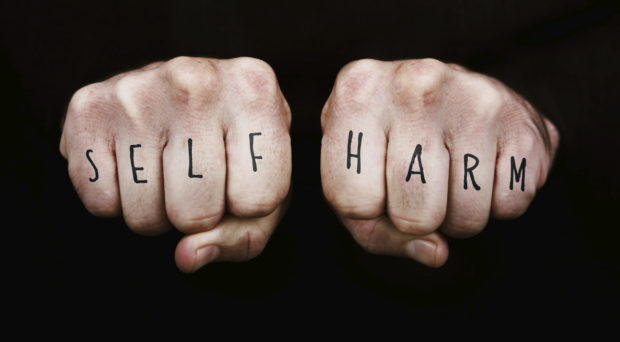
Stereotypes are widely held beliefs about the characteristics and behaviors of a group of individuals that rarely reflect reality. There are many negative stereotypes associated with mental health, most of which can be attributed to a lack of understanding; these stereotypes have led to strong social stigma attached to mental ill health, which often has a negative effect on the lives of people with mental health problems. In particular, there are lots of negative stereotypes and myths attached to self-harm.
Myth: Self-injury isn’t common
The exact numbers of how many people self-harm in the general population is hard to determine. Available research likely misrepresents how common self-harm is; published studies are usually based on people who either seek help at a hospital, or from their primary healthcare provider, after harming themselves (so called clinical samples). However, a lot of people who self-harm do not seek help; meaning that these clinical samples are not representative of self-injury rates in the general population.
Published rates of non-suicidal self-injury (NSSI) vary hugely between studies; a recent meta-analysis found that many of the differences in prevalence rates reported in non-clinical samples are likely due to different definitions of self-harm behaviors and different methods of assessment between studies. After adjustment for methodological factors, the researchers calculated the pooled lifetime prevalence of NSSI to be 17.2% among adolescents, 13.4% among young adults, and 5.5% among adults. As these figures show, people of all ages self-injure – it is not just a teenage thing – but there is far less data available about the rates of self-injury in adults.

Myth: Only women self-harm
It is often assumed that women and girls are more likely to engage in self-harm, however the evidence in the published literature is conflicting, depending on the country, age range and type of sample (e.g. clinical, college, community) studied.
A recent meta-analysis, which included 120 studies that contain demographically diverse samples, suggests that “women are slightly more likely than men to engage in NSSI”, but the overall rate of NSSI identified among males (26.36%) was still remarkably high. They also found that “the gender difference was larger in clinical samples compared to both community and college samples”, suggesting that males who engage in NSSI may be less likely to seek out help.
Myth: People who self-harm are suicidal
Self-harm is sometimes viewed as a suicide attempt by people who don’t understand it. By its very definition the term NSSI describes the intentional destruction of one’s own body tissue without suicidal intent, and for purposes not socially sanctioned. For the majority of people who self-harm it is an emotion regulation strategy – it’s about trying to cope with difficult feelings and circumstances.
Although there is a relationship between self-harm and suicide – those who self-harm are at greater risk than the general population – many more people self-harm than commit suicide. However, some people who self-harm also have suicidal feelings and might attempt to take their own life, which is why self-harm must always be taken seriously!
Comments